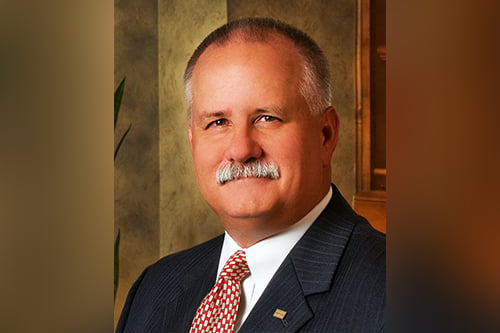

Over the past year, there has been an “incremental increase” in the awareness of flood exposure and the need for flood insurance coverage across the United States. The 2020 Atlantic hurricane season broke a record by producing 30 named storms, of which 13 became hurricanes, including six major hurricanes. It caused around $30 billion in losses associated with flood damage alone, which is well above the historical average. That hyperactive catastrophe season, combined with greater media coverage about the need for flood insurance, has injected more urgency into finding a fix for America’s flood insurance protection gap.
Approximately 85% of properties in the United States are uninsured for flood damage. Many Americans believe they’re only at risk of flood if they live by a body of water, but time and time again, that opinion has been disproven during heavy rainfall events at inland locations. There’s also the issue of whether homeowners are required to carry flood insurance by their mortgage company. If the legal requirement isn’t there, many homeowners opt to go without the coverage.
“The social and financial impacts to property owners when they incur a flood loss without insurance can be absolutely devastating; it’s crippling for both communities and individuals,” said James R. Watje (pictured), senior vice president of private flood at Wright National Flood Insurance Services. “While I do think there’s been an incremental increase in public awareness and understanding of flood risk and the need for insurance, we still have a very long way to go before flood insurance becomes so pervasive and so common that most people buy it.”
One fix for America’s gaping flood insurance protection gap is to provide consumers with more choice, according to Watje. For a long time, primary flood insurance in the United States was purchased exclusively through the National Flood Insurance Program (NFIP), which is backed by the Federal Emergency Management Agency (FEMA). The program is based on a flood map system, through which homeowners and business owners in FEMA-designated special flood hazard areas (SFHA) are often required to purchase coverage, especially if they have mortgages from federally regulated or insured lenders.
That changed about five-years-ago when the private flood insurance market started to heat up. Watje commented: “To begin with, private flood insurance was distributed primarily through the excess and surplus lines market, where insurance companies are not regulated specifically on their rates and/or their policy forms. That lack of regulation leads to a lot of volatility and inconsistency in the market.
“If we can bring more admitted products - like our Wright Residential Private Flood insurance program - to market, then we can remove that volatility and help consumers get more comfortable with the product. Because admitted products are state regulated, they provide more consistency for both the consumer and the agency distribution network in that they can rely on coverage being available when they need it.”
Some states, like Florida, are already quite progressive when it comes to providing homeowners with private flood insurance alternatives. There are currently close to 27 homeowners’ insurance companies that are offering flood insurance as an endorsement to the homeowners’ policy, in addition to a range of private flood products that are being offered by insurers on a standalone basis.
“In a state like Florida, consumers have lots of options from a private flood perspective – and that helps to close the insurance protection gap,” said Watje. “In other states, the private flood market is not yet as pervasive, but we have had a lot more proactive engagement from individual state regulators and insurance commissioners around trying to find ways to ease the burden for insurers entering new markets in order to offer additional private flood insurance products. More choice will give consumers more opportunities to buy appropriate and affordable coverage.”
The big challenge, according to Watje, continues to be education. This is an area where private flood insurers have an advantage in that most are using cutting edge data analytics tools to craft their solutions. This very granular flood risk assessment, which can differentiate flood risk between neighboring properties on the same street, can help property owners make more educated decisions about what product best suits their needs and what they’re willing to pay.
“It’s our belief that if we help to bring flexible, private flood insurance products that are affordable, easy to use, and easy to understand for consumers, that will provide a vehicle for expanding the footprint of the number of people who can access flood coverage,” Watje told Insurance Business. “I often get asked the question: ‘What’s it like to compete against the NFIP?’ And my answer is always the same. At Wright National Flood Insurance Services, we are not competitors with the NFIP; we are partners. We are working hand-in-hand to provide additional coverage options for people that are not currently buying flood insurance.
“The NFIP will be around for a long, long time. We’ve not set out to replace it, and we’re certainly not looking to take policyholders from the NFIP just to insure them in the private market. We’re looking to partner with the NFIP to identify the people that are not protecting their homes with flood insurance, and we want to provide them with flexible, easy and affordable solutions. That will add to the resiliency and stability of communities so that when they are ravaged by a significant event, the insurance industry can help them to rebuild faster and stronger. It’s critical that the private flood insurance market works with the NFIP to achieve this goal. We can’t do this apart.”
